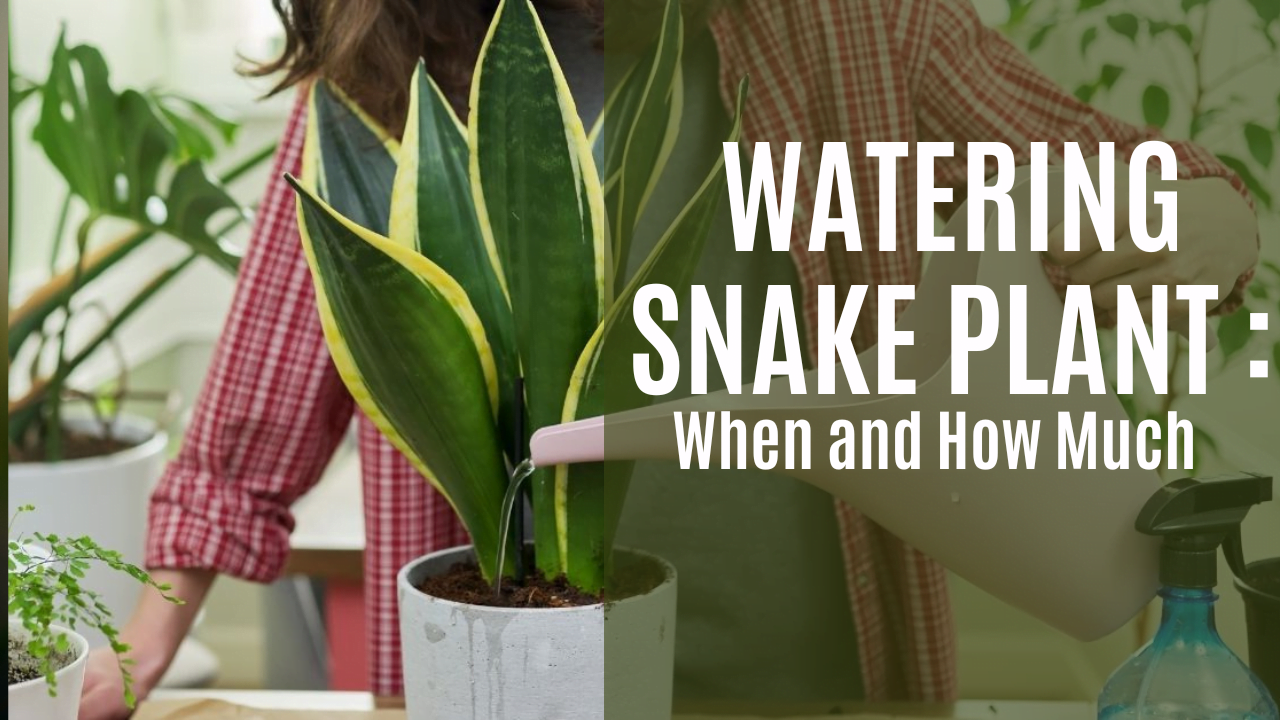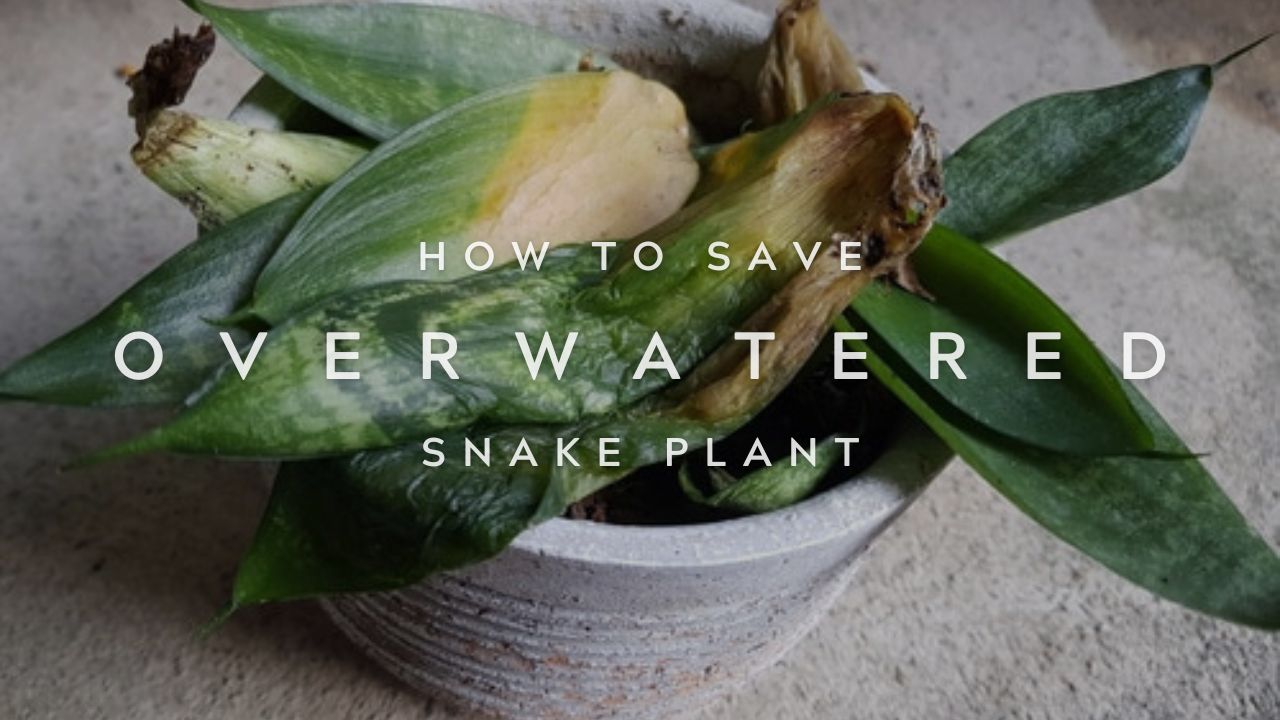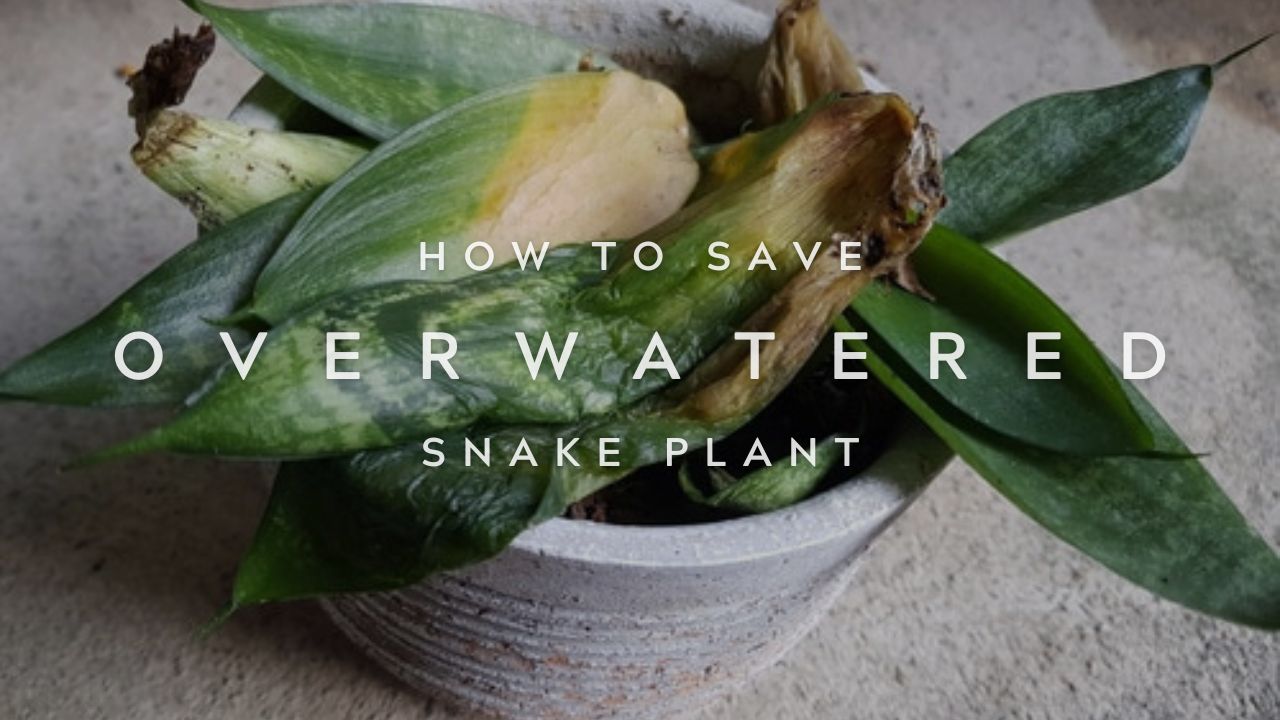The Most Common Mistakes When Watering Snake Plants can lead to a variety of problems, from stunted growth to root rot. These resilient plants are known for their ability to tolerate neglect, but even snake plants have limits when it comes to water.
Understanding their unique needs and avoiding common pitfalls is crucial for keeping your snake plant thriving.
Snake plants, also known as Sansevieria, are popular houseplants due to their low-maintenance nature and ability to thrive in a variety of conditions. However, even these hardy plants can suffer from improper watering. This article will delve into the most common mistakes made when watering snake plants, providing practical tips and strategies to ensure your plant flourishes.
Understanding Snake Plant Watering Needs

Snake plants are known for their resilience and ability to thrive in a variety of conditions, but even these hardy plants require proper watering to flourish. Understanding their unique water storage capacity and the role of the soil mix in water retention is crucial for maintaining their health.
Water Storage Capacity
Snake plants, also known asSansevieria trifasciata*, are succulents, meaning they have evolved to store water in their leaves and roots. This adaptation allows them to tolerate periods of drought, but it also means they are susceptible to overwatering. The fleshy, upright leaves of the snake plant are packed with water-storing cells, making them appear thick and rigid.
Soil Mix
The soil mix plays a critical role in water retention and drainage, directly influencing how frequently you need to water your snake plant. A well-draining soil mix is essential for snake plants, preventing water from accumulating around the roots and leading to root rot.
A common recommendation is a mix of potting soil, perlite, and coarse sand. The perlite and sand improve drainage by creating air pockets in the soil, allowing excess water to flow through.
Watering Frequency
A general guideline for watering snake plants is to allow the soil to dry out completely between waterings. This typically translates to watering every 2-4 weeks, depending on factors like the size of the plant, the temperature, and the humidity.
You can determine if your snake plant needs water by checking the soil moisture with your finger. If the top inch of soil feels dry, it’s time to water.
Overwatering
Overwatering is the most common mistake snake plant owners make, and it can have serious consequences for the plant’s health. While snake plants are known for their drought tolerance, they are not indestructible. Excess water can lead to root rot, which can ultimately kill the plant.
Overwatering is one of the most common mistakes when caring for snake plants, leading to root rot and ultimately, plant death. While these hardy plants can tolerate some neglect, they thrive with consistent, yet careful watering. Choosing the right pot can play a significant role in ensuring proper drainage, which is crucial for preventing overwatering.
This is especially important when considering the unique needs of bonsai trees, which require specialized pots to maintain their delicate root systems. Bonsai Pots: How to Pick the Right One for Your Space provides valuable insights on selecting the perfect pot for your bonsai.
Just like bonsai trees, snake plants also benefit from pots with drainage holes, allowing excess water to escape and prevent root saturation.
Signs of Overwatering
Overwatering can manifest in various ways, making it crucial to recognize these signs early. Here are some common indicators that your snake plant is receiving too much water:
- Yellowing Leaves:This is a common sign of overwatering, as the roots are unable to absorb nutrients due to the excess water. Yellowing leaves can start at the base of the plant and gradually spread upwards.
- Soft, Mushy Leaves:Overwatering can cause the leaves to become soft and mushy, indicating that the plant is not getting enough oxygen.
- Leaf Drop:When a snake plant is overwatered, it may shed leaves as a way to conserve energy.
- Foul Odor:Overwatered snake plants can emit a foul odor, often from the soil. This is a sign that the roots are rotting.
- Mold Growth:Mold growth on the soil surface or around the base of the plant is a clear indication of excessive moisture.
Consequences of Overwatering
Overwatering can lead to several problems, including:
- Root Rot:The most serious consequence of overwatering is root rot. When the soil is constantly wet, the roots are deprived of oxygen and begin to decay.
- Leaf Damage:Overwatering can cause leaves to turn yellow, brown, or mushy. It can also lead to leaf drop.
- Reduced Growth:Overwatering can inhibit the plant’s growth by preventing the roots from absorbing nutrients.
- Pest Problems:Overwatering can create an environment that attracts pests such as fungus gnats.
Preventing Overwatering
To prevent overwatering, it’s important to understand the snake plant’s watering needs and follow these tips:
- Use Well-Draining Soil:Snake plants thrive in well-draining soil that allows excess water to escape quickly.
- Water Only When the Soil is Dry:Allow the top inch or two of soil to dry out completely before watering again.
- Avoid Overwatering:Don’t water the plant on a regular schedule. Instead, water only when the soil is dry.
- Choose the Right Pot:Use a pot with drainage holes to allow excess water to escape.
- Monitor the Plant:Regularly check the plant for signs of overwatering. If you notice any of the symptoms mentioned above, adjust your watering habits accordingly.
Signs of Underwatering: The Most Common Mistakes When Watering Snake Plants
While overwatering is a common issue with snake plants, underwatering can also be detrimental. Recognizing the signs of an under-watered snake plant is crucial for timely intervention and preventing long-term damage.
Visual Cues Indicating a Snake Plant Needs Water
Several visual cues indicate that your snake plant is thirsty and requires watering. These cues can help you determine the right time to water your plant and avoid overwatering.
- Wilting Leaves:One of the most obvious signs of underwatering is wilting leaves. Snake plant leaves normally stand upright and stiff. When the plant is dehydrated, the leaves will start to droop and become limp. The wilting can be localized to the tips or spread throughout the entire leaf.
- Leaf Curl:As the plant becomes more dehydrated, the leaves may start to curl inwards. This is a sign that the plant is trying to conserve moisture. The curling can be subtle or pronounced depending on the severity of the underwatering.
- Dry Soil:The most reliable indicator of underwatering is dry soil. Feel the soil with your finger; if it feels dry to the touch, it’s time to water your plant. You can also check the weight of the pot; a lighter pot indicates dry soil.
- Discoloration:Chronic underwatering can lead to leaf discoloration. The leaves may turn yellow or brown, starting at the tips and progressing towards the base. This is a sign that the plant is stressed and struggling to survive.
Difference Between Under-watering and Overwatering Symptoms
It’s important to differentiate between underwatering and overwatering symptoms to provide the right care for your snake plant. While both can cause wilting and discoloration, the symptoms often manifest differently.
- Underwatering:The leaves will typically wilt and become limp, starting at the tips and progressing towards the base. The soil will be dry to the touch. Leaf discoloration may occur, starting at the tips and progressing inwards, turning yellow or brown.
- Overwatering:The leaves will also wilt and become limp, but the wilting will often be more pronounced and widespread. The soil will be wet and soggy. Leaf discoloration may occur, but it will often be more widespread and appear as yellowing or brown spots.
Overwatering is one of the most common mistakes when caring for snake plants. Many people assume that because they are drought-tolerant, they need to be watered sparingly. However, this can lead to root rot and other issues. To avoid these problems, it’s important to understand the proper watering techniques for these hardy plants.
For detailed information on how much and how often to water snake plants, refer to our comprehensive guide: Watering Snake Plants: How Much and How Often?. By following these guidelines, you can ensure your snake plant thrives and remains healthy for years to come.
The leaves may also develop soft, mushy spots, indicating root rot.
Consequences of Chronic Underwatering
While occasional underwatering is unlikely to cause severe damage, chronic underwatering can lead to several issues that affect the health and longevity of your snake plant.
- Stunted Growth:Chronic underwatering can inhibit the plant’s ability to absorb nutrients and photosynthesize efficiently. This can result in stunted growth, with the plant becoming smaller and weaker.
- Leaf Drop:If the underwatering persists, the plant may start to drop leaves as a last-ditch effort to conserve moisture. This can significantly affect the plant’s appearance and overall health.
- Plant Death:In extreme cases, chronic underwatering can lead to the death of the plant. If the plant is severely dehydrated and its roots are damaged, it may not be able to recover.
Watering Techniques
Understanding the proper watering techniques is crucial for maintaining a healthy snake plant. While overwatering is the most common mistake, improper watering methods can also lead to issues. Two popular methods, soak and dry and top vs. bottom watering, each have their advantages and disadvantages.
Soak and Dry Method
The soak and dry method is a widely recommended technique for watering snake plants. It involves thoroughly soaking the soil until water drains out of the drainage holes, then allowing the soil to dry out completely before watering again. This method mimics the natural environment where snake plants thrive, with periods of intense rainfall followed by dry spells.
The key to the soak and dry method is to allow the soil to dry out completely between waterings.
To ensure proper drainage, use a pot with drainage holes and a well-draining potting mix. After watering, discard any excess water that accumulates in the saucer. The frequency of watering will depend on factors like the size of the pot, the type of potting mix, and the ambient temperature and humidity.
Top Watering vs. Bottom Watering, The Most Common Mistakes When Watering Snake Plants
Top watering and bottom watering are two distinct methods of applying water to snake plants. Each method has its pros and cons.
Top Watering
Top watering involves pouring water directly onto the soil surface, allowing it to soak down to the roots. This method is simple and convenient, but it can lead to uneven watering and potential for soil compaction over time.
Bottom Watering
Bottom watering involves placing the pot in a tray or sink filled with water, allowing the plant to absorb water through the drainage holes. This method ensures more even hydration and helps prevent soil compaction. However, it requires more time and effort, and it may not be suitable for all pot sizes.
Seasonal Watering Practices
The frequency and amount of water snake plants need vary depending on the season.
Season |
Watering Frequency |
Watering Tips |
|---|---|---|
Spring & Summer |
Water thoroughly when the top inch of soil is dry |
Increased temperatures and sunlight demand more frequent watering. |
Fall & Winter |
Water less frequently, allowing the soil to dry out almost completely |
Reduced sunlight and cooler temperatures require less frequent watering. |
Environmental Factors
Environmental factors play a crucial role in determining the watering needs of snake plants. These factors can significantly influence how frequently you need to water your plant, impacting its overall health and growth. Understanding these factors can help you provide the optimal watering schedule for your snake plant.
Temperature and Humidity
Temperature and humidity are two important environmental factors that directly affect the rate of evaporation from the soil, impacting how quickly the soil dries out.
- Higher temperatureslead to faster evaporation, meaning the soil dries out quicker, requiring more frequent watering.
- Lower temperaturesresult in slower evaporation, allowing the soil to remain moist for longer periods, thus requiring less frequent watering.
- High humidityalso contributes to slower evaporation, as the air is already saturated with moisture.
- Low humidity, on the other hand, promotes faster evaporation, requiring more frequent watering.
For example, during the summer months when temperatures are high, your snake plant may need watering every 2-3 weeks, while in winter, when temperatures are lower, you might only need to water it once a month or even less frequently.
Pot Size and Material
The size and material of the pot your snake plant is in can also affect its watering needs.
- Larger potshold more soil, which takes longer to dry out, requiring less frequent watering.
- Smaller potshold less soil, which dries out faster, necessitating more frequent watering.
- Pots made of porous materials, like terracotta, allow for better air circulation and faster evaporation, leading to more frequent watering.
- Pots made of non-porous materials, like plastic, retain moisture for longer, requiring less frequent watering.
It’s important to choose a pot that is the appropriate size for your snake plant and consider the material’s impact on water retention.
Light Exposure
Light exposure can also influence the frequency of watering.
- Snake plants in bright lighttend to grow faster and use more water, requiring more frequent watering.
- Snake plants in low lightgrow slower and use less water, needing less frequent watering.
If you notice your snake plant growing quickly, it may need more frequent watering, especially if it’s in bright light. Conversely, if it’s growing slowly and in low light, you may need to water it less frequently.
Troubleshooting Watering Issues

Even with the best intentions, sometimes things go wrong. Snake plants are relatively resilient, but even they can suffer from improper watering. Here, we’ll delve into common watering problems and provide solutions to help you revive your snake plant.
Identifying Watering Problems and Solutions
Troubleshooting watering issues involves identifying the signs of overwatering or underwatering and then taking appropriate action.
- Overwatering:Yellowing leaves, soft stems, mushy roots, foul odor from the soil are common signs of overwatering.
- Underwatering:Brown tips, dry soil, wilting leaves, and stunted growth are indicators of underwatering.
Once you’ve identified the problem, the next step is to address it.
- Overwatering:Repot the snake plant into fresh, well-draining soil, ensuring proper drainage. Allow the soil to dry completely between waterings. Prune any affected leaves and roots.
- Underwatering:Gradually rehydrate the snake plant by watering it deeply. Allow the soil to dry slightly between waterings.
Diagnosing Watering Issues
Diagnosing watering issues involves a systematic approach to determine the root cause.
Symptom |
Possible Causes |
Solution |
|---|---|---|
Yellowing leaves |
Overwatering, insufficient light, root rot, nutrient deficiency |
Repot in fresh soil, adjust light levels, prune affected leaves, fertilize as needed. |
Brown tips |
Underwatering, low humidity, mineral buildup, fluoride in water |
Water deeply, increase humidity, flush soil with distilled water, use filtered water. |
Wilting leaves |
Underwatering, overwatering, extreme temperatures, pests |
Water deeply, repot if overwatered, adjust temperature, treat for pests. |
Soft stems |
Overwatering, root rot |
Repot in fresh soil, prune affected stems. |
Mushy roots |
Overwatering, root rot |
Repot in fresh soil, prune affected roots. |
Stunted growth |
Underwatering, insufficient light, nutrient deficiency |
Water deeply, adjust light levels, fertilize as needed. |
Recovering an Overwatered Snake Plant
Overwatering is a common problem that can lead to root rot and other issues.
- Repotting:Carefully remove the snake plant from its pot. Inspect the roots. If they are mushy or black, prune them away.
- Fresh Soil:Repot the snake plant in fresh, well-draining soil. Ensure the pot has drainage holes.
- Allow to Dry:Do not water the snake plant for at least a week, allowing the soil to dry completely.
- Monitor:Observe the snake plant closely for signs of improvement. If the leaves continue to yellow or the stems remain soft, further intervention may be necessary.
Recovering an Underwatered Snake Plant
Underwatering can cause the leaves to wilt and become dry.
- Gradual Rehydration:Water the snake plant deeply, allowing the water to drain through the drainage holes.
- Monitor:Observe the snake plant for signs of improvement. If the leaves remain wilted, repeat the watering process.
- Prevention:To prevent underwatering, ensure the soil is allowed to dry slightly between waterings.
End of Discussion
Watering snake plants effectively is essential for their health and longevity. By understanding their unique water needs, recognizing the signs of overwatering and underwatering, and employing proper watering techniques, you can ensure your snake plant thrives for years to come.
Remember, a little patience and observation will go a long way in keeping your snake plant happy and healthy.
Expert Answers
What is the best time of day to water snake plants?
The best time to water snake plants is in the morning, allowing the soil to dry slightly before nightfall. This helps prevent root rot and allows the plant to absorb water effectively.
Can I use tap water to water my snake plant?
Tap water is generally fine for watering snake plants, but it’s best to let it sit out for 24 hours to allow chlorine to evaporate. This can help prevent mineral buildup in the soil.
What should I do if my snake plant is drooping?
Drooping leaves can be a sign of both overwatering and underwatering. Check the soil moisture to determine the cause and adjust your watering accordingly.
